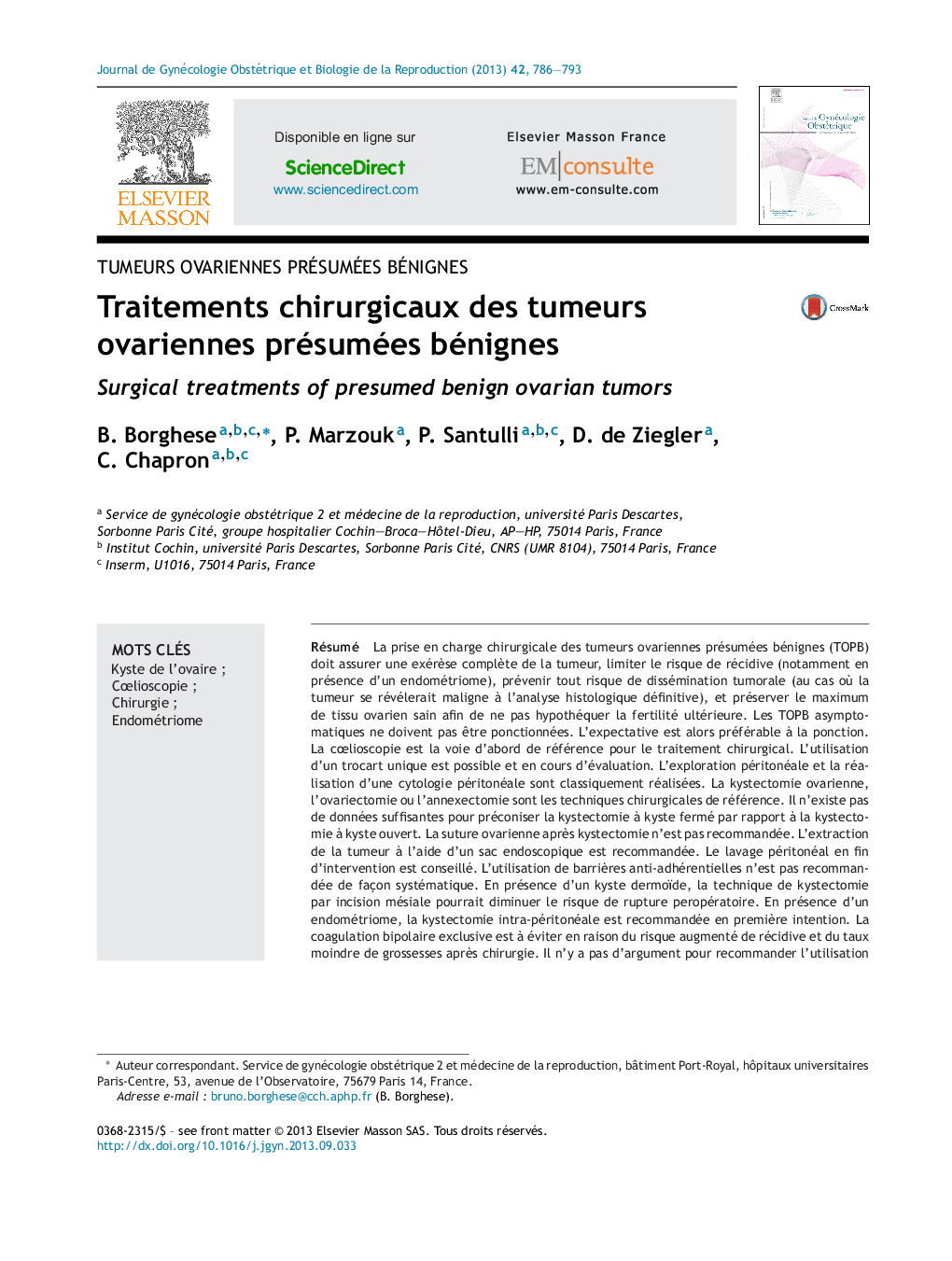| Article ID | Journal | Published Year | Pages | File Type |
|---|---|---|---|---|
| 3272701 | Journal de Gynécologie Obstétrique et Biologie de la Reproduction | 2013 | 8 Pages |
Abstract
The surgical management of presumed benign ovarian tumors (PBOT) must ensure complete removal of the cyst, reduce the risk of recurrence (especially in case of endometrioma), prevent any risk of tumor dissemination, and must preserve healthy ovarian tissue. Asymptomatic PBOT should not be punctured. Expectation is preferable to puncture. Laparoscopy is the gold standard for surgical treatment. Single-port laparoscopy is feasible and being evaluated. Peritoneal exploration and peritoneal cytology are conventionally performed. Ovarian cystectomy, oophorectomy and salpingo-oophorectomy are the standard techniques. Suture after cystectomy is not recommended. The extraction of the cyst using an endoscopic bag is recommended. Peritoneal washing after surgery is recommended. The use of anti-adhesions barriers is not recommended routinely. In case of dermoid cyst, cystectomy by mesial incision may decrease the risk of intraoperative rupture. In case of endometrioma, the intraperitoneal cystectomy is recommended as first-line surgery. Exclusive bipolar coagulation should be avoided because of increased risk of recurrence and lower pregnancy rates. There is no argument to support the use of plasma energy and CO2 laser in the treatment of endometriomas. Ethanol sclerotherapy may be proposed in patients with recurrent endometriomas after surgery and referred to medically assisted procreation, although there is no comparative trial with cystectomy.
Keywords
Related Topics
Health Sciences
Medicine and Dentistry
Endocrinology, Diabetes and Metabolism
Authors
B. Borghese, P. Marzouk, P. Santulli, D. de Ziegler, C. Chapron,
